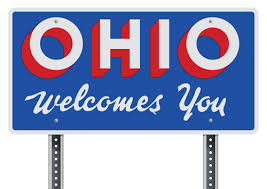You have a deep desire to make a difference to a cause very important to you—animals, the environment, mental health, youth, poverty, veterans, among many others—so you decide that starting a nonprofit is the best way for you to make an impact. This blog post is first in a series of ten steps to starting a nonprofit organization.
STEP #1: DEVELOP A MISSION STATEMENT
The first step is to develop a mission statement. This step is more crucial than people realize. An effective mission statement will guide every aspect of your organization moving forward, serve as your pitch for raising funds or securing grants, and explain to the world your organization’s reason for existing. (Note: existing nonprofit organizations should review their mission statements and update them if necessary.)
Your mission statement is crucial but is not the place to describe every aspect of your organization in detail. For example, the North Shore Animal League’s mission statement is, “To provide, promote and advance the humane protection, care, and treatment of animals by any and all means.” This statement is general enough to cover various animals, and various methods of care. It allows for future growth by not limiting the types of animals or any specific area the group serves. Other groups benefit by a more narrow mission statement, such as specific breeds of dogs, or specific care such as spaying and neutering, depending upon the group’s purpose.
The fundraising platform Snowball suggests three elements to a mission statement that keep your statement broad yet focused on purpose:
- Drive. What are you trying to solve? Who do you want to help? Do you want to start a community program to keep kids off the streets (solving boredom, wanting to help youth)? Do you want to start a group that takes dogs out of shelters and places them in foster homes until they are adopted (solving overcrowded shelters and resulting euthanasia, wanting to save dogs)?
- Action. What do you want to do to help? You want to start a community program to keep kids off the street by “developing after-school programs”? You want to start a group that puts shelter dogs in foster homes by “organizing a network of foster homes”?
- Impact. What are your goals? What impact do you want to have? We want to reduce problematic behaviors and increase positive outcomes in kids. We want to save the lives of adoptable dogs.
Mission statements should be no longer than two sentences. Eliminate unnecessary adjectives, use action words versus passive speak, and be concise. Classic examples of conciseness include replacing “at this point in time” with “now.” If possible, work with a group to develop your purpose, then reduce it to a mission statement. Read the statement out loud a few times to be sure it sounds clear and concise.
Once you have your mission statement finalized, memorize it!
The next blog post, Step #2, will address choosing your board of directors and leadership team. If you have any questions about starting a nonprofit in Ohio, or developing an effective mission statement, email me at julie@juliemillslaw.com, or visit www.juliemillslaw.com for additional methods to reach me.




